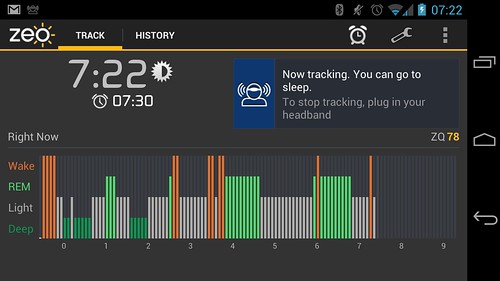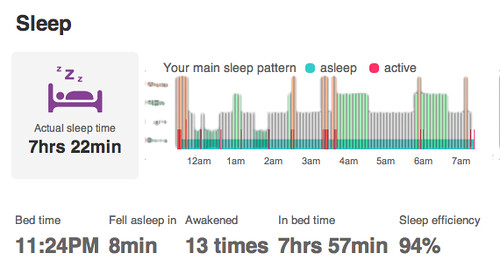Tracking sleep with two different sensors
I've been following the Quantified Self for a little while now, ever since Colin Hayhurst first mentioned them to me; and Kate has a similar enthusiasm for the quantitative, so we've both been tracking aspects of ourselves: between us weight (Withings), diet (manually), sleep (Zeo), and exercise (Runkeeper, Fitbit).
One of the modules of my Master's this year was Pervasive Computing, in which we spent a great deal of time looking at sensors and the real-world difficulties of extracting useful information from them. I did a project looking at LEDs, light sensors and morse code which I wrote about briefly here (and will post the full text of, once the course is over).
One key lesson from this was the difficulties of ensuring consistent useful results from different sensors; so when I noticed that Fitbit offers to track your sleep patterns, and Kate's Zeo did the same, I thought it'd be interesting to compare the results one gets from each. Fitbit straps to your wrist and detects hand movement, inferring sleep from a lack of such movement; Zeo monitors brain waves.
So a few nights ago I strapped both to myself and managed nonetheless to drift off. Here's what the Fitbit told me about my night:
Here's the Zeo for the same time period:
I was quite surprised at how close they both were. Here's the two graphs scaled to an equivalent size and superimposed:
This seems to suggest that I'm twitching physically not just when I wake up, but when I move between different types of sleep…
As a result of this, I'm much more confident in both products, as they seem to be measuring something consistently using two completely different methods; which, funnily enough, is an approach which my course tutor Dan Chalmers covered in his pervasive computing textbook...


